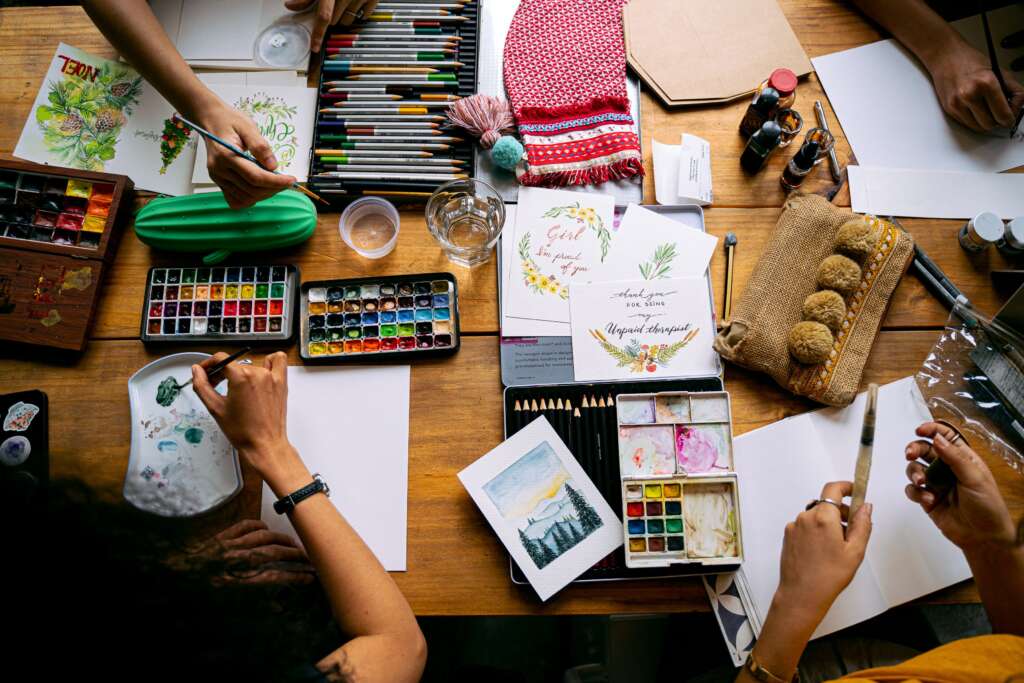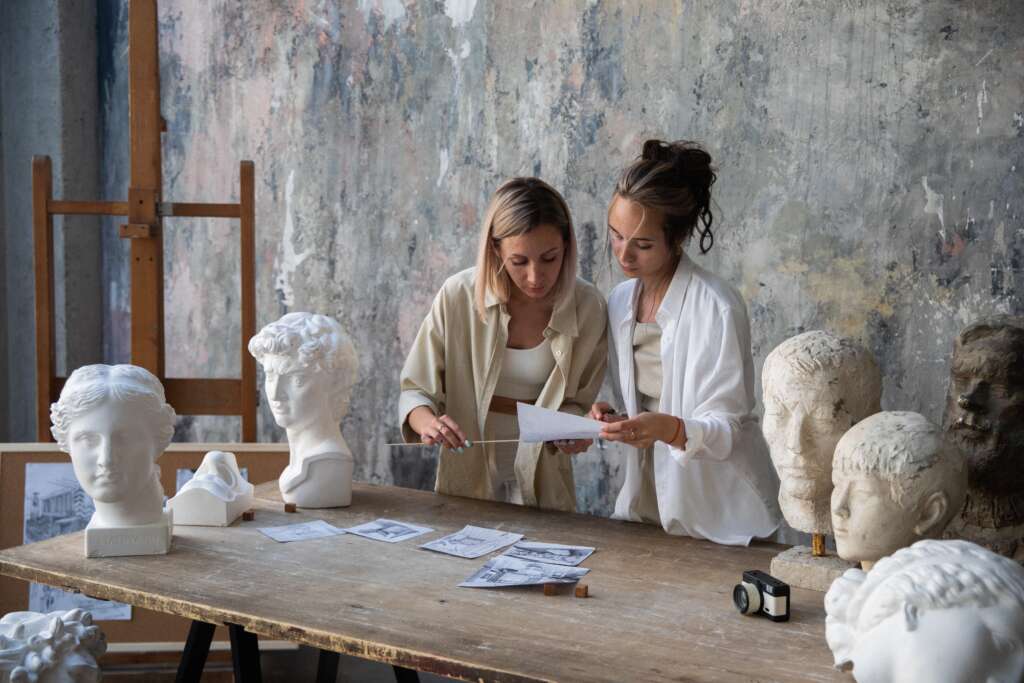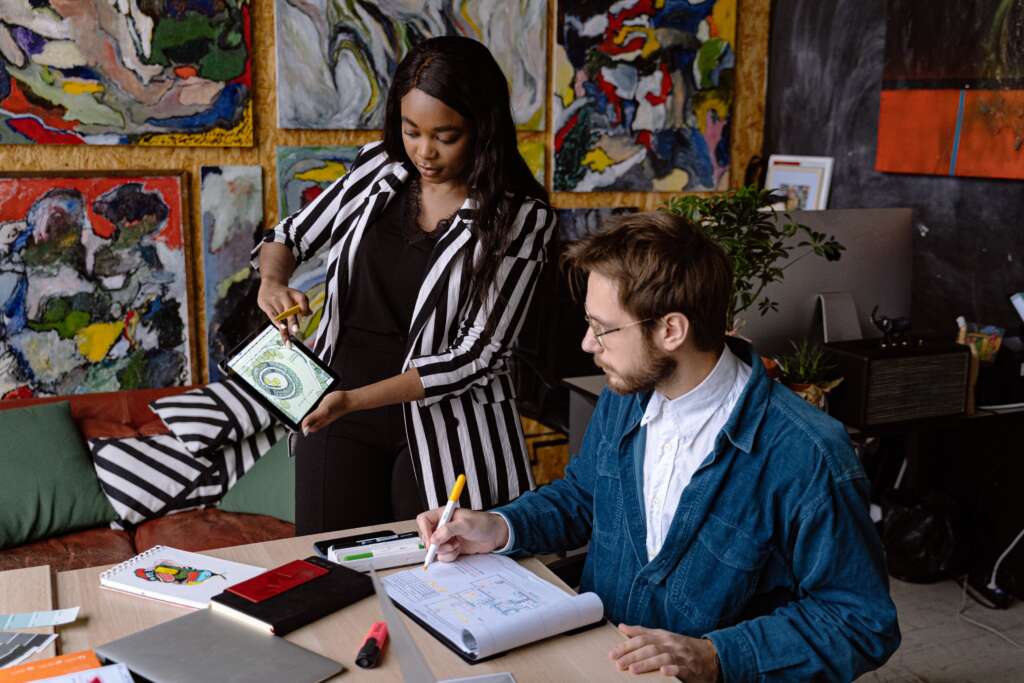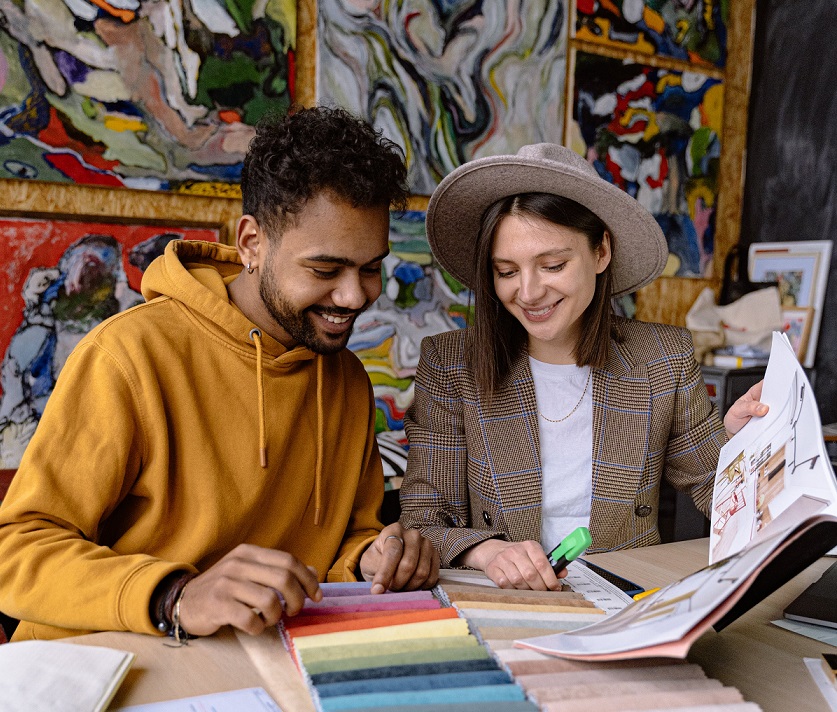While many creatives enjoy – and often prefer – the peace of working alone, profound ideas often flourish through dynamic collaborations. So, although it may be tempting to scoff or cringe at the mere mention of ‘networking,’ it could be time to embrace social opportunities that align with your artistic goals. Networking in the arts isn’t just about exchanging business cards or making small talk at events; it’s about creating a nurturing environment where artists can thrive, collaborate, and push the boundaries of their craft. In this article, we’ll explore the significance of cultivating a creative community and the role networking plays in fostering artistic growth.
Building Bridges
Networking in the arts can be likened to building bridges between isolated islands. Artists often work in silos, engrossed in their individual processes, but when these ‘islands’ connect, rich and diverse ideas can emerge. It helps artists to break free from the constraints of solitude and engage with others who offer different perspectives, skills, and experiences.
With creative ventures, these connections can extend beyond specific artistic disciplines. For instance, painters can collaborate with musicians, writers with dancers, and sculptors with filmmakers. As these interdisciplinary collaborations take shape, new and exciting possibilities unfold, pushing the limits of traditional artistic expression.
Opportunities for Exposure
Due to the competitive nature of the creative industry, exposure is key to gaining recognition and success. Networking opens doors to opportunities that might otherwise remain closed. Attendees at events, art exhibitions, and cultural gatherings include not only fellow artists but also curators, gallery owners, critics, and potential patrons.
By actively participating in networking events, artists can showcase their work, receive constructive feedback, and establish connections with influential figures in the art community. These encounters can lead to invitations for exhibitions, collaborations, or even features in reputable publications. In the arts, visibility often begets opportunity, and networking makes visibility quite easy to achieve.

Sharing Knowledge and Resources
Networking in the arts isn’t solely about self-promotion; it’s also about the exchange of knowledge and resources. Artists bring a wealth of skills and insights to the community, and by sharing these, they contribute to collective growth.
Workshops, seminars, and collaborative projects are avenues through which artists can share their expertise. Whether it’s a masterclass on a specific technique or a panel discussion on the challenges of the creative process, these events create a space for the transmission of knowledge. In a thriving creative community, artists become both teachers and students, thus fostering a culture of continuous learning.
Additionally, networking facilitates the sharing of resources such as studio spaces, equipment, and materials. In a collaborative community, artists can pool their resources to overcome financial barriers and access the tools they need to bring their visions to life.
Building a Support System
The journey of an artist is often marked by highs and lows, and the emotional rollercoaster of the creative process can be isolating. Networking within a creative community provides a support system that understands the unique challenges artists face.
Through shared experiences, artists can find encouragement, advice, and empathy. Peer mentorship emerges organically, with seasoned artists offering guidance to those navigating the early stages of their careers. This sense of belonging and mutual support not only strengthens individual artists but also contributes to the resilience and vitality of the entire creative community.

Collaboration Breeds Innovation
Significant artistic milestones are often achieved with a team. Networking facilitates the coming together of diverse talents, sparking collaborations that transcend the limitations of individual expertise and effort.
Consider the fusion of technology and visual arts, where programmers collaborate with traditional painters to create interactive installations. These partnerships result in immersive experiences that push the boundaries of what is possible in both fields. Through collaboration, artists are exposed to novel approaches, techniques, and perspectives that inspire innovation.
Networking events, whether formal or informal, are ideal for prospecting collaborative ideas. A chance encounter at a gallery opening or a casual conversation during a workshop can lead to partnerships that result in outstanding projects.
Fostering Diversity and Inclusivity
A vibrant creative community embraces diversity in all its forms – cultural, ethnic, gender, and stylistic. Networking plays a pivotal role in fostering an inclusive environment where artists from different backgrounds can come together.
By actively seeking out and participating in diverse networking opportunities, artists can therefore broaden their scope and gain exposure to perspectives they might not encounter in their immediate circles. This not only enriches their own artistic practice but also contributes to a more inclusive and dynamic creative network.

In essence, networking is a powerful tool for collaboration, innovation, and community building. Cultivating a creative community is not a luxury but a necessity for the continued evolution of the arts. By actively engaging in networking, artists can enhance their own opportunities for exposure and recognition and also help other artists thrive. Since the arts play a crucial role in shaping culture and inspiring change, the importance of networking cannot be overstated. Remember, art is impactful when done alone, and transformative when done together.
